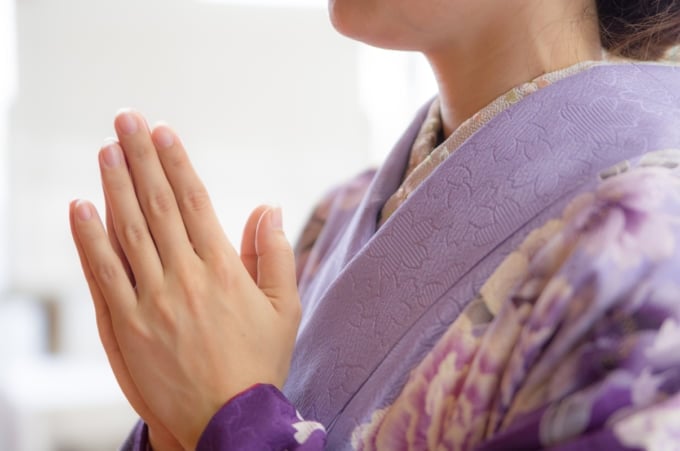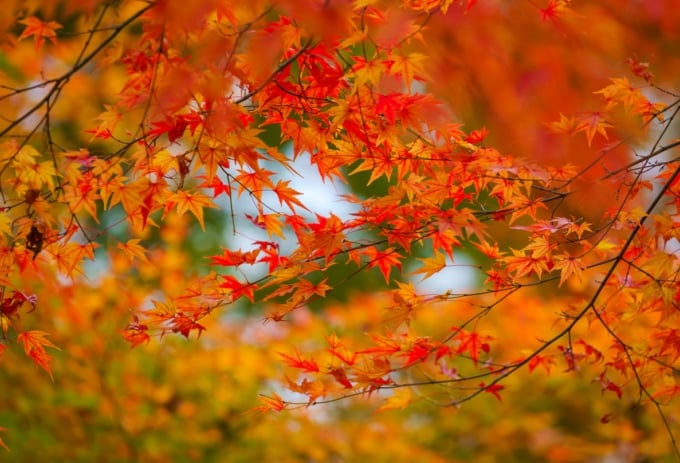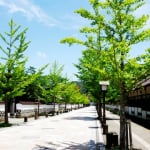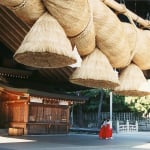Name: Ichibata Yakushi
Address: 803 Kogai-cho, Izumo City, Shimane Prefecture, Japan, 691-0074
Official Website:http://ichibata.jp/

Highlights and Tourist Spots of Ichibata Yakushi, the Sacred Temple Overlooking Izumo
Have you heard of Ichibata Yakushi in Shimane Prefecture? This historic temple is located at an elevation of 200 meters atop Mount Ichibata, near the center of the Shimane Peninsula. It has long been revered as the "Eye-Healing Yakushi", a Buddhist deity believed to protect eyesight, and as a guardian of children’s well-being and growth.
Beyond daily prayers, Ichibata Yakushi hosts a variety of events throughout the year, including Zazen meditation sessions, tea ceremonies, and monthly festivals. In this guide, we’ll introduce its must-see highlights, sacred amulets (omamori), Goshuin stamps, and the best time to enjoy its autumn foliage.
table of contents
[x] close
Highlights and Tourist Spots of Ichibata Yakushi, the Sacred Temple Overlooking Izumo
- Ichibata Yakushi: The Sacred Temple of the Eye-Healing Buddha
- Visit Ichibata Yakushi for Worship and Prayer Services
- Goshuin and Omamori Available at Ichibata Yakushi
- Ochato (Sacred Tea) at Ichibata Yakushi
- Best Time to See Autumn Leaves at Ichibata Yakushi & Highlights
- Ichibatayama Cottage
- Access & Parking Information
Ichibata Yakushi: The Sacred Temple of the Eye-Healing Buddha
Ichibata Yakushi is a revered Buddhist temple dedicated to Yakushi Nyorai, the Medicine Buddha, who is believed to cure ailments. Among the many Yakushi temples, Ichibata Yakushi is particularly venerated as the “Eye-Healing Yakushi.”
The temple’s origins date back to 894 AD, when a fisherman named Yoichi enshrined the image of Yakushi Nyorai after discovering it in the sea. According to legend, his mother, who was suffering from an eye disease, was miraculously healed. Since then, Ichibata Yakushi has been worshiped as a guardian deity for eye health and has a history spanning over 1,100 years. It serves as the head temple of the nationwide Ichibata faith.
While the primary blessing (gorieki) of Ichibata Yakushi is the healing of eye diseases, it is also widely known as a protector of children’s well-being and growth. Many parents visit to pray for their children’s healthy development.
The main deity, Yakushi Nyorai, is depicted holding a medicine jar in his left hand. It is believed that this jar contains a divine elixir that cures not only physical and mental illnesses but also social ailments. Devotees seek blessings for household safety, good relationships, safe childbirth, academic success, business prosperity, protection from misfortune, and spiritual enlightenment. Additionally, the temple offers ancestral memorial services and Mizuko (stillborn or deceased infant) memorials.
Visit Ichibata Yakushi for Worship and Prayer Services

■ Worship at the Main Hall
When visiting Ichibata Yakushi, follow the proper worship etiquette at the main hall. Upon entering the temple gate (Sanmon), bow respectfully. Then, cleanse your hands and mouth at the purification fountain (temizuya): first, wash your left hand, then your right, and finally rinse your mouth.
At the main hall, offer a monetary donation before clasping your hands in prayer. If incense is available, light it before praying. After making your wishes, bow once again, and as you leave through the temple gate, bow and clasp your hands together once more as a sign of respect.
During your worship at the main hall, it is highly recommended to recite the sacred mantra of Yakushi Nyorai (the Medicine Buddha) three times in your heart:
“On Korokoro Sendari Matougi Sowaka”
For group visits, prior reservations allow guests to enter the main sanctuary, listen to the temple’s history, and participate in a ritual incense offering.
■ Prayer Services (Kito) for Blessings
The temple accepts prayer requests at the administrative office, and online applications are available for those visiting from afar. Prayer services start at ¥3,000, and the most common requests are for the healing of eye diseases and the safe growth of children.
Goshuin and Omamori Available at Ichibata Yakushi
■ Goshuin (Temple Seals)
Ichibata Yakushi offers a total of five types of goshuin (temple seals). Among them, three types—"Oyakushi-sama," "Chūgoku Kannon-sama," and "108 Kannon Goshuin"—are available for a donation fee of 300 yen each. The other two, the "Goshuin" featuring the temple's mountain name (Iōzan) and the "Goshuin" with a gold seal, are 500 yen each. Visitors can also have these seals written in their personal goshuincho (stamp books).
Additionally, goshuin can be obtained at the shamusho (temple office). In the past, visitors needed to submit a copied sutra (shakyō) to receive one, but now goshuin can be obtained simply as a mark of worship. These are available on the first floor of Shōseikaku between 8:30 AM and 5:00 PM.
Ichibata Yakushi is also the third temple of the Izumo-kuni Shinbutsu Pilgrimage. This means visitors can receive not only Ichibata Yakushi’s goshuin but also the Izumo-kuni Shinbutsu Pilgrimage No. 3 goshuin. However, this special seal can only be obtained in the designated Izumo-kuni Shinbutsu Pilgrimage stamp book, not a regular goshuincho.
A unique feature of the Izumo-kuni Shinbutsu Pilgrimage goshuin is the Goein-jyu (Guardian Bead) that comes with it. This wooden bead is engraved with a red seal and the temple’s name. Each temple in the pilgrimage has its own bead, which can be strung together using a braided cord. Wearing the necklace signifies one’s pilgrimage journey. The fee for this goshuin, including the guardian bead, is 500 yen.
■ Omamori (Protective Charms)
Ichibata Yakushi offers four types of omamori (protective charms):
1. Ganshin-mamori – A charm for eye health and overall well-being, available in red and blue.
2. Kodomo-mamori – A colorful and cute charm designed for children's protection, featuring embroidered child motifs.
3. Katsumori – A black charm with gold lettering, symbolizing victory and success.
4. Gōkaku-mamori – A gold and red charm with gold lettering, designed to help students succeed in exams.
These charms make for meaningful souvenirs and protective keepsakes for visitors and their loved ones.
Ochato (Sacred Tea) at Ichibata Yakushi
Ichibata was once a tea plantation, and today, visitors can enjoy "Ochato"—a special tea made from bancha (coarse tea) grown within the temple grounds. This tea is brewed using sacred spring water from Mount Ichibata, known for its spiritual properties. It is believed to have healing benefits for various ailments and is not only consumed as a drink but also used for washing the eyes or as an offering at household altars to receive blessings. The sacred tea service is available for 500 yen, including a traditional tokkuri (ceramic flask).
Among Ichibata Yakushi’s renowned offerings is Goryōcha, which refers to the tea leaves used in Ochato. These special tea leaves are available in both tea bag and loose leaf varieties, priced at 500 yen each.
Best Time to See Autumn Leaves at Ichibata Yakushi & Highlights

Ichibata Yakushi Temple is surrounded by breathtaking natural scenery. Each season offers a unique charm—weeping cherry blossoms in spring, lush greenery in summer, and a mystical snow-covered landscape in winter. However, the most spectacular sight is the autumn foliage.
During the autumn season (mid to late November), the maple trees within the temple grounds and along the pathway turn vibrant shades of red and orange, creating a mesmerizing view. The autumn illumination event is held from mid-November, enhancing the beauty of the foliage with enchanting lights. Additionally, seasonal events such as tea ceremonies and lantern walks take place, offering visitors a truly immersive cultural experience.
Ichibatayama Cottage
Located just a 2-minute walk from the main hall of Ichibata Temple, Ichibatayama Cottage offers a tranquil retreat with breathtaking views of Mount Daisen and Lake Shinji. Surrounded by nature, this peaceful lodging is perfect for relaxing before exploring other nearby attractions.
The cottage is thoughtfully designed with reclaimed wood, natural timber, and diatomaceous earth walls, creating a cozy atmosphere filled with the refreshing scent of wood. Built with high insulation, it stays cool in the summer and warm in the winter, ensuring a comfortable stay year-round.
Name: Ichibatayama Cottage
Address: 803 Kogai-cho, Izumo City, Shimane Prefecture, 691-0074, Japan (Inside Ichibata Temple)
Official Website:http://ichibata.jp/cottage/
Access & Parking Information
From JR Matsue Station or Dentetsu Izumoshi Station, you can reach Ichibatayama Cottage in about 10 minutes by taxi or bus. If traveling by car, it takes approximately 30 to 40 minutes from Matsue or Izumo City.
The main parking lot is located about 10 minutes on foot from the mountain path. However, for wheelchair users and visitors staying at Ichibatayama Cottage or visiting the Ossuary, a dedicated parking area is available just a 1-minute walk from the main hall.
RELATED ARTICLES
REGIONS
CATEGORIES
FEATURED ON Shimane
-

Recommended Spots Around Lake Shinji in Shimane – From Sightseeing Boats to Local Gourmet
-

“Little Kyoto of San’in” – 5 Tourist Spots to Enjoy History and Culture in Tsuwano Town, Shimane Prefecture
-

If you’re a couple looking to tie the knot, this is the place to be! Here are 5 date spots in Shimane that will help you forge lasting bonds.
-

If You’re Visiting Gōtsu City in Shimane Prefecture, Don’t Miss These! 7 Recommended Sightseeing Spots in Gōtsu City
-

Highlights of the Izumo Aquarium “Shimane Prefectural Lake Shinji Nature Museum Gobius” and Nearby Tourist Attractions
MOST POPULAR ON Shimane
-
 1
1Doha: Must-see Attractions in the Capital of Qatar
-
 2
2Toronto: 10 Things to do in this Picturesque Canadian City
-
 3
3Amarillo: A City Famous for It’s Amazing Canyons, Great History and Music
-
 4
4South Korea: Dazzling Scenery, Rich Culture and Fascinating History
-
 5
5Kuwait: A Country in Middle East Asia Famous for Hot Sand Dunes and Stunning Cityscape





